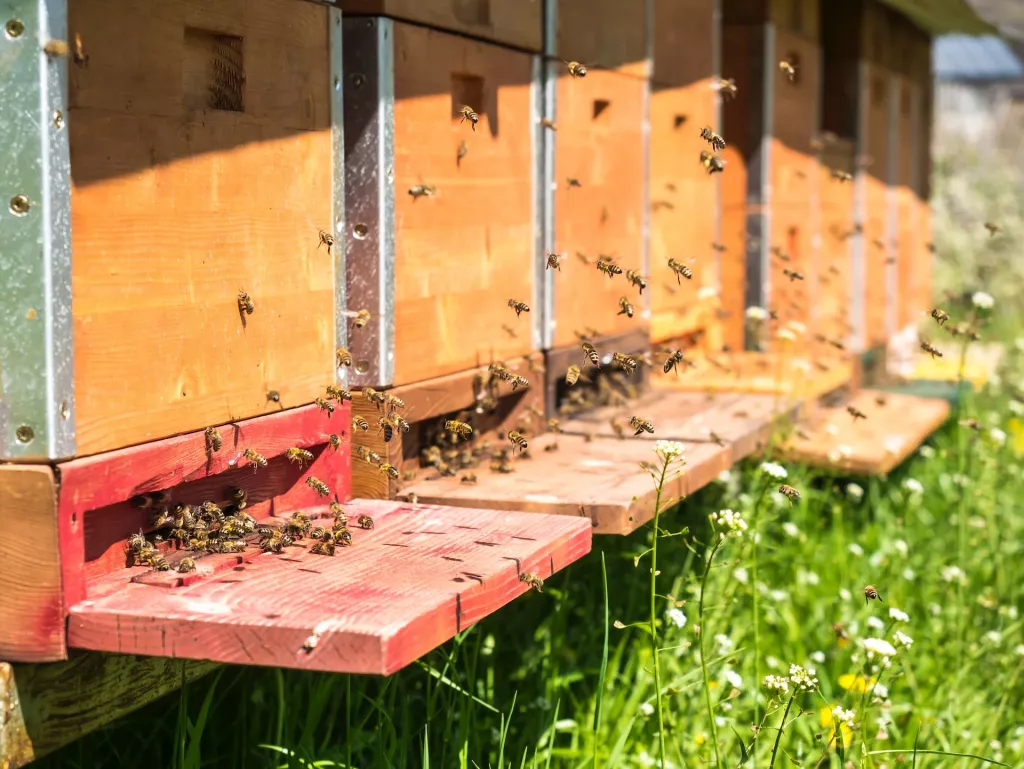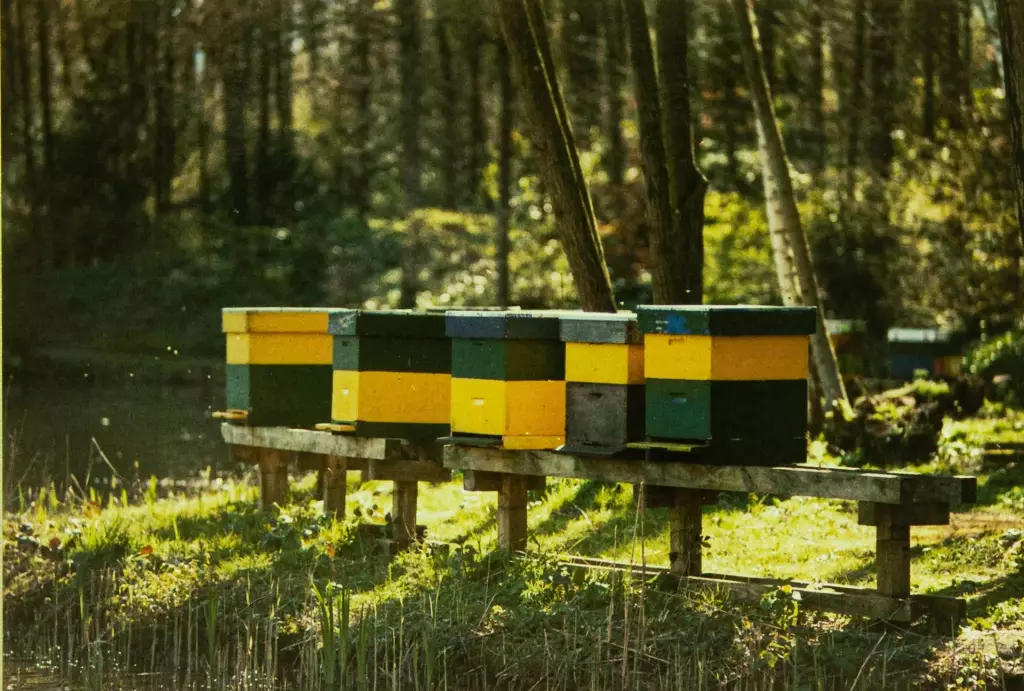What Is the Best Time Of Year To Start a Beehive?
You can't just start a beehive any day of the year. In order for your new hive to flourish you'll need to account for temperatures, food availability, and the natural lifecycle of your bees.
The best time of year to start a beehive is in early spring, immediately after the cold weather ends. This gives bees plenty of time to settle in before winter. As soon as the cold season ends, mild temperatures and blooming flowers ensure the perfect environment for the hive to thrive.
Before your bees arrive, you should get everything ready. If you're just starting beekeeping, you've come to the right place. In this article, you'll learn the best time of the year to start a beehive, and when to order bees — you should start early.
Summary
- Spring is the best time to start a new hive. An abundance of food and mild temperatures will help increase the population quickly and easily.
- Starting a beehive in the winter is a bad idea. There won't be any food available, and your bee population will be at its lowest.
- Ordering your bees in January or February will ensure you'll get your shipment by April. Order any later and you might not be able to get any bees, since bee stocks tend to run out quickly.

On this page:
Why Spring Is the Best Time To Start a Beekeeping?
Spring is the best time to set up a beehive because of the warm weather and blooming flowers. These two conditions make it ideal for bees to thrive. In early spring, existing hives will have consumed all their food stores and will require feeding by their keeper.
However, as soon as the flowers bloom, all kinds of food sources become available. In a new hive, bees will arrive without food; hence, most beekeepers will feed their new package of bees with sugar syrup to assist them in getting started.
Once bees find flowering plants to forage from, they will be self-sufficient. As spring goes on, the queen bee will lay lots of eggs and produce plenty of broods. This time, the bees will have a sufficient amount of stored food.
The bees' activity is strongly influenced by changing seasons, wherein each month brings new changes to their behavior. The bees are less active during colder months and more active when the weather is warm.
Therefore, knowing the bees' activity by season best determines when to start a beehive. As the beekeeper, keep the hive safe and in good condition, and the rest is up to the bees.
Winter
During this season, the bees start forming a tight cluster around the queen to ensure survival and protection during the coldest months. At this point, only female worker bees will be in the hive, forcing out the male honey bees that no longer serve their purpose.
Since the bees will be confined in the hives, starting a beehive during this season makes no sense.
Spring
During spring, honeybees are often close to starvation, so you must prepare an emergency food supply until the flowers bloom.
When starting a beehive this season, it's necessary to assist them by giving the new bees sugar syrup. It will help them build resources inside the hive until they become self-sufficient. You have to monitor the bees to ensure that everything is going smoothly.
By May, the activity of the bees should be in full swing, and the drones that have been kicked out in the winter should be replaced. This period shows the explosion in hive population, so ensure to keep the hive well-maintained at all times.
Summer
In June and July, the worker bees are constantly collecting pollens, producing honey, and looking after the queen.
Watch out for predators, like insects and animals, that may be attracted to the honey and could cause damage to the hive. As September approaches, you'll see a decline in the population because the worker bees dismiss the drones.
Fall
Fall is the harvest season. However, be sure to harvest only some of the hive's honey and leave around 60 to 70 pounds of honey for the bees to thrive in the harsh cold months ahead.
This is the right time for the keeper to medicate and supplement the bees with sugar syrup. As fall progresses, there'll be less activity from them. Use this time to strengthen the security of the hive to protect them from rodents.

When Is It Too Late To Start a Beehive?
Winter is a stressful time for bees. The honey they collect during the year helps them stay fed and survive the long cold months.
Since there is no blooming vegetation to provide food, the hive's activity decreases. When the environment is cold, the queen stops laying eggs; as a result, the population is reduced. During this time, the bees' primary concern is to protect the queen at all costs.
Starting a beehive in the winter is a bad idea. Even if you acquire bees during this time, setting them up will fail. The best thing you can do during the winter is to order bees. January and February are the ideal months to order bees to ensure you're at the top of the supplier's list.
Can I Start a Beehive in the Summer?
Though it's possible to start a hive in June or July, it will be challenging. Your hive may not be as established as it'd be when starting earlier in the spring. Make sure to feed your hive with syrup to survive its first winter.
During the summer, an established hive is busy collecting nectar and pollen to produce honey. Moreover, your hive is more susceptible to predator attacks during these months. Hence, it's essential to keep up with the maintenance if you're starting. Learn how to inspect a beehive here.
Can I Start a Beehive in the Fall?
Fall is not the ideal time to try and add new bees to the hive because they need to prepare to survive the coming cold months. Flowering plants begin to decrease at this time, making foraging tough for bees.
When you introduce new bees to the hive, their first job is to fill frames and build wax comb. The task itself requires lots of energy, so they can't start rearing brood.
Nevertheless, the fall season is the ideal time to start your preparations if you're planning to begin your beekeeping journey. A local beekeeping association in your area might begin offering preparatory classes.
Fall provides a good opportunity to start planning everything. Get in touch with your bee suppliers and other equipment you need to start your beehive.
Weather Conditions for a New Beehive
The best time to start a new hive easily is at the beginning of spring, when the weather starts to warm. They don't care much for rainy and windy days: they'll simply retreat to their hive.
Extreme weather conditions, like winter or too much heat, can be a massive problem for bees. For instance, if it's too hot, the bees will work harder to cool the hive down, where they could die from heat exhaustion.
On the other hand, if it's too cold, the bees will struggle to find a way to keep the hive warm, and they could die from the cold.
When Should You Order Bees?
It is necessary to order bees in January and February or the latest so that they can ship them to you by April. Ordering the bees during these months is crucial because of one simple reason: bee stocks tend to run out quickly.
So, you may need more time if you order them by April or May. When buying a colony, make sure to buy from a trusted source. Before your bees arrive, here are some things you need to prepare:
- A hive
You can buy a fully assembled hive or build one yourself. - A place for your beehive
Find a place that's far enough from your home. You can read our guide on how to set up a beehive in your yard. Moreover, it should comply with local beekeeping regulations. - Buy protective clothing
Get at least a veil to protect your face from getting stung, or you want to get a full suit. - Hive tools
Get at least two hive tools for prying open hive parts. - Queen catcher
This tool will make catching your queen bee easier and gentler.